Selsey and the Mulberry Harbours
Selsey played a key role in the constructing of the famous D-Day Mulberry Harbours. This is the story behind Selsey and the Mulberry Harbours.

The floating artificial harbours made up of different structures which raised and lowered with the tide. These harbours were key to the D-Day invasion during the Second World War.
Selsey was chosen as one of two assembly points for the specific Phoenix caissons, huge concrete structures which were sunk and hidden from view in the sea off Selsey and raised ready for the D-Day invasion.
The disastrous raid on Dieppe in 1942 demonstrated to Allied planners, that an invasion of continental Europe using existing heavily enemy defended harbours, would be at an unacceptably high cost in lives and equipment. Instead, a 50 mile stretch of low-lying beaches of Normandy was chosen, from which to launch the Operation Overlord landings and the subsequent invasion.
The few existing harbours there were too small to handle the planned volumes of supplies over a prolonged period. Thus, the concept of taking prefabricated artificial harbours to the enemy held coast, was conceived.
Plans called for two artificial harbours -code named Mulberry-for the British and American invasion sites, respectively.

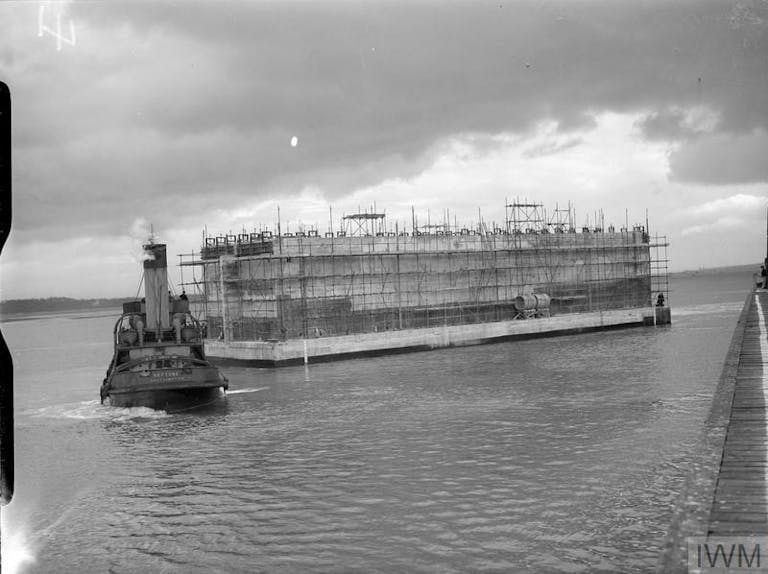
The components for the two harbours were built at many different locations in Britain and transferred to assembly points on the south coast. The area off Selsey was one such important assembly point.
The day after the 6th June D-Day beach landings, the Mulberry components were towed from there some 100 miles across the Channel to designated areas facing the beaches.
Once secured, unloading of vital supplies of increasing volumes of materiel and rations began 10 days later.
The harbours remained in use until mid-November when existing ports were secured and brought into use.
The task had not been easy: tows were damaged or lost during the crossings. Once in situ, the harbours were damaged in unusually heavy summer storms: Mulberry A in the American sector experienced particularly heavy and permanent damage.
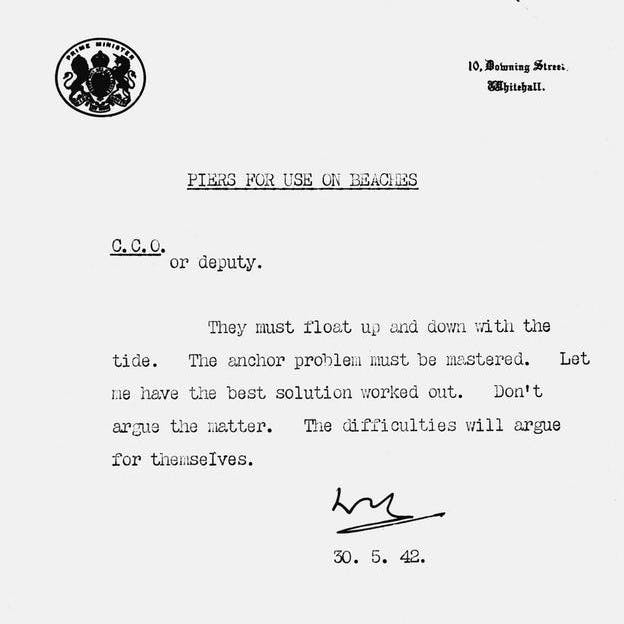
The fascinating story of the design, testing, and placing of the components that made up the Mulberry Harbours, is recorded in many publications.
These all demonstrate British ingenuity and the collaboration between universities, research institutes, civil engineering firms, the Royal Navy, and the Army. The US military played their part in the design and planning.
Planning which had taken years as shown in Prime Minister Winston Churchill's memorandum dated 30 May 1942. The build took place in a matter of just seven months and in strict secrecy.
The role of Selsey in this operation relates to the huge concrete Phoenix Caissons, important major components of the Mulberry Harbours.
Some 150 caissons of various sizes were built at several UK sites, including some at Langstone. These, with other components were towed first to the two main assembly points, of which Selsey was one.
Once there, these were flooded and temporarily secured against tidal movement. Later, these structures were re-floated and towed across the Channel, together with large amounts of other components and equipment.
Once in position, these were then flooded and permanently sunk. Combined with floating wave barrage units and scuttled ships, these formed the breakwater structures, creating the sheltered waters inside which floating pontoons, causeways, and pierheads made up the harbours.

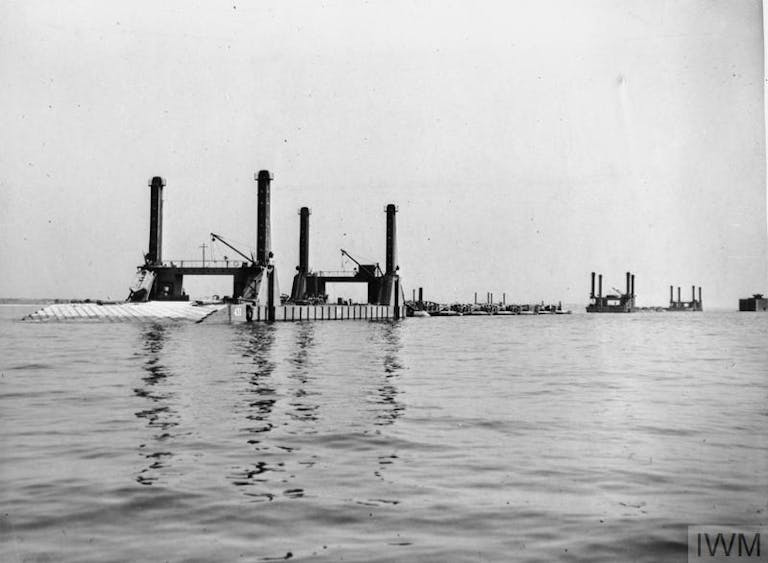
Unbeknown to its residents, Selsey played an important role as one of the two crowded assembly points for the Phoenix Caissons and other components in readiness for the crossing.
The town and its population had already been affected by the war with frequent raids and bombing by enemy aircraft.
Life was subject to exceptionally strict security regulations: visitors were not allowed to enter the town, and the surrounding sea was closed to fishermen. Residents could not enter the Park-Pagham Harbour area.
Nearby, several anti-aircraft batteries were stationed, together with their supporting personnel. There was an airfield at Church Norton, from where fighter aircraft provided defensive cover in support of the D-Day operations.
In late May Prime Minister Winston Churchill briefly came to Selsey to inspect Phoenix operations. He held his meeting at Stewarton, one of the railway carriage houses on East Beach.
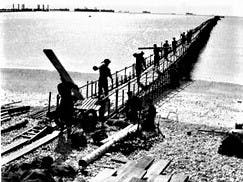
The unexplained arrival of increasing numbers of enormous concrete blocks off the coast gave rise to all manner of rumour and speculation in the town.
After these giant structures then equally mysteriously departed in early June, local people were still unaware that they had been living next to one of the important assembly points for the artificial harbours, in preparation for the Normandy invasion.
These unexplained floating structures remained among the best kept secrets of the war.
Today, remnants of this remarkable operation can still be seen on both sides of the Channel: in France seen from the Normandy town of Arromanches, the arc of caissons out at sea still shows the huge extent of what was the British Mulberry B Harbour.

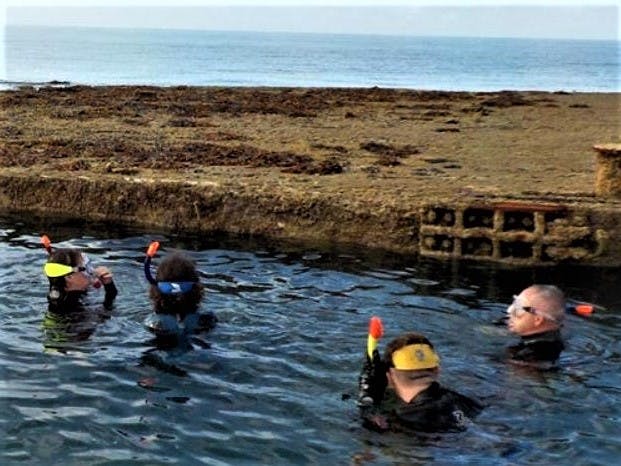
Closer to home off Pagham Harbour a Phoenix Caisson that sank and could not be re-floated, is visible at low tide. Further off the coast in ten metres of water, a second Phoenix Caisson that broke its back and sank in the storm the night before D-Day, is popular with divers today, and is part of the D-Day underwater heritage trail.
There are two blue heritage plaques marking the Mulberry Harbours, one on East Beach towards Pagham Harbour, and one out at sea.
The Secret Invasion That Made D-Day Possible
Created by Forces TV to show the science and design behind the Mulberry Harbours. Alongside their important role in D-Day.


